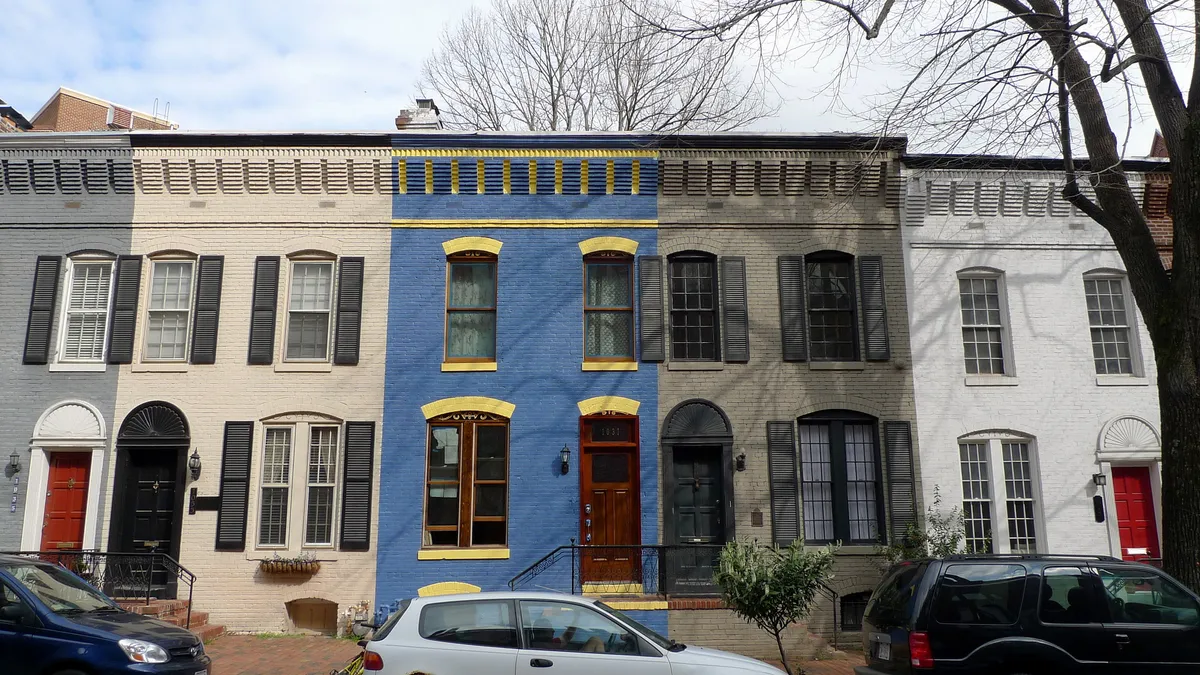Dive Brief:
- State and local governments have imposed "excessive regulatory barriers" on housing that have resulted in high home prices and low housing supply, according to the White House's annual report of the Council of Economic Advisers.
- An entire chapter of the 441-page report is dedicated to expanding affordable housing and "the role of overregulation." The report specifically calls out 11 cities — San Francisco, Honolulu, Los Angeles, San Diego, Washington, Boston, Denver, New York, Seattle, Baltimore and Oxnard, CA — where the inability to meet housing demand "has driven home prices far higher than the cost to produce a home."
- The report specifies overregulation as zoning controls, rent controls, energy efficiency mandates, maximum-density allowances and parking requirements, among other measures. It says overregulation of housing markets has led to the increased cost of attaining homeownership; increased homelessness; fewer people served by housing assistance programs; weakened labor mobility and economic growth; reduced opportunity for children; and increased traffic congestion.
Dive Insight:
The Trump administration's deregulation efforts are centered on Executive Order 13771, "Reducing Regulation and Controlling Regulatory Costs," which calls for agencies to repeal two existing regulations for every new one enacted. The administration has gone beyond this by cutting seven regulations for every significant new regulation, according to the report, which is an effort that has been closely tracked by the Brookings Institution.
Efforts from the federal government to deregulate housing are not new. In June 2019, President Trump signed an executive order to establish the White House Council on Eliminating Regulatory Barriers to Affordable Housing, which has been tasked with determining "best practices for removal" of regulatory barriers on housing. Even during President Obama's administration, the Affirmatively Furthering Fair Housing rule was finalized to promote fair housing choice and support the integration of communities and living patterns, occasionally by taking on regulatory barriers.
Trump has long called on cities, particularly large metro areas in California like Los Angeles and San Francisco, to step up efforts on supplying affordable housing. In July 2019, Trump said the federal government is "not very equipped" to do that work locally, though he suggested his administration "may intercede" if local leaders cannot improve the housing crisis. Administration officials have floated various methods to do so, including what they described on a call with reporters as "humane policing."
Los Angeles Mayor Eric Garcetti reached out to President Trump and U.S. Housing and Urban Development (HUD) Secretary Ben Carson earlier this year to request more federal assistance in addressing that city's homelessness problem, which resulted in the formation of a joint working group to tackle the matter, according to a report from the Los Angeles Times. The Times notes that details on that group are still scarce.
Other cities, particularly the 11 mentioned in this report, have made strides in prioritizing housing affordability and homelessness. While the report estimates homelessness across those 11 cities would fall by 31% on average if overly burdensome regulations were relaxed, local governments have actually found success in innovative solutions that monitor the situation while keeping the interest of people experiencing homelessness at heart.
For instance, in Honolulu, Mayor Kirk Caldwell introduced inflatable tent-like structures in parks, which enables individuals to stay for a maximum of three days, under police monitoring, while they transition into temporary or permanent housing. As of late January, nearly 100 individuals had been helped.












